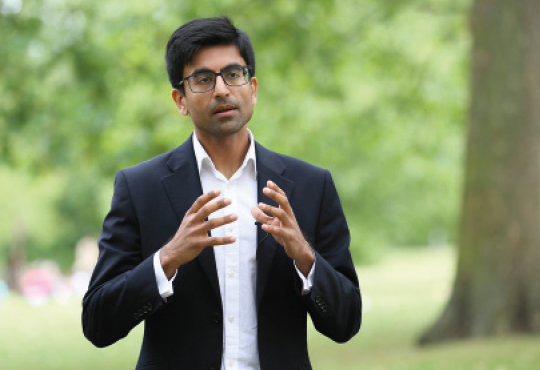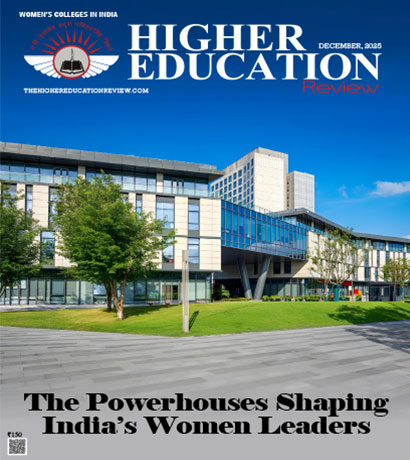Is the UK Becoming less Attractive for Indian Students?

Pratik Dattani, Managing Director EPG Economic and Strategy Consulting
Immigration and "taking back control" were the two overarching themes of the Brexit vote in 2016 in Britain. The country voted to leave the European Union, with the remainers narrowly losing the referendum. Since then, immigration has cast a shadow over bilateral trade discussions between India and the UK. The transition from David Cameron to Theresa May as Prime Minister has introduced a clear hawkish tone on immigration. Before she became PM, May was equally conservative on immigration as a long-standing Home Secretary. Indeed, immigration formed a large part of the first bilateral discussion between PM Modi and May when they met in Delhi two years ago.
It's no secret that Indian student numbers to Britain have fallen from a figure of more than 40,000 in 2010/11 to 16,550 in 2016/17 due to stricter UK immigration rules. There are more Hong Kong, US, Malaysian and Chinese students in the UK than Indian. But according to the Higher Education Statistical Agency (HESA), only the US and Chinese numbers have noticeably increased in recent years.
Lord Philip Norton, chair of the UK's Higher Education Commission, said in July this year that the country's dependence on Chinese students was not sustainable as the young population in China was forecast to decline.
Its no secret that Indian student numbers to Britain have fallen from a figure of more than 40,000 in 2010/11 to 16,550 in 2016/17 due to stricter UK immigration rule
Perceptions and Truth
There have been two main reasons for the Indian decline. As Home Secretary, May included students in the government's annual migration targets and used a clampdown on students as a way of meeting these targets. But students are transitory, whereas migration is about long-term trends, so including students in the wider figures gave the public a misleading account of the number of migrants coming. The policy was widely ridiculed across the entire political spectrum but still stands today.
The second reason was a change in the country's post-study work visa regime. Students now only have three months after the end of their course (at most universities)'to find a job. Employers have to apply for a sponsorship license to qualify to employ such a student. It's meant employment opportunities for Indian students have dried up, with the exception of in the financial and professional services.
Some of the fears of Indian students were well-founded. Until 2011 or so, a lax regulatory regime had led to the mushrooming of dozens of so-called "colleges", usually run by Indians, Nepalis or Nigerians, that awarded vocational qualifications. In practice, the colleges did not want to teach much, and the students there did not want to learn much. It was simply the cheapest way to legally stay in the country for the students, many of whom were Indian.
May has shut down the vast majority of these bogus colleges by withdrawing their UK Border Agency license. The "students", who had often taken large loans back home, stayed on illegally in the UK, as they could not face going back. Or so the government claimed. This year, the government quoted a figure of 100,000 such undocumented Indian immigrants in the UK. This was used as a reason not to relax some application rules for Indian students earlier in 2018, while other countries like China benefited. The true figure is likely to be closer to 5,000.
Euroscepticism and the Brexit vote have made immigration center-stage in Britain. Many Indians in Britain voted for Brexit thinking fewer opportunities for Eastern Europeans meant greater opportunities for Indians. This was misguided.
The reality is that Britain is still very welcoming to Indian students. University College London has 15,735 foreign students, while universities outside London, such as the University of Manchester, Edinburgh, and Coventry all have more than 10,000 foreign students. London is a truly global city and the experience an Indian student can have here is unmatched anywhere in the world.
The quality of British education also remains amongst the best in the world. The government introduced the teaching excellence framework (TEF) in 2017, a system that assesses the quality of teaching in universities. They have led to universities being more focused on the outcomes that matter for students. The ratings are determined by six core metrics based on teaching, academic support and progression to employment.
Leaving the politics aside, Britain's educational institutions are amongst the best in the world. In last year's figures, the number of Indian students coming to the UK went up marginally and the British government is hoping this will continue to be the case. In the meantime, British universities need to be more innovative in their marketing to Indian students.
Pratik Dattani
Pratik Dattani is Managing Director of EPG Economic and Strategy Consulting, with offices in London and Bangalore. EPG offers on economic analysis, strategic communications, policy advice and market entry assistance, particularly in the education sector.
It's no secret that Indian student numbers to Britain have fallen from a figure of more than 40,000 in 2010/11 to 16,550 in 2016/17 due to stricter UK immigration rules. There are more Hong Kong, US, Malaysian and Chinese students in the UK than Indian. But according to the Higher Education Statistical Agency (HESA), only the US and Chinese numbers have noticeably increased in recent years.
Lord Philip Norton, chair of the UK's Higher Education Commission, said in July this year that the country's dependence on Chinese students was not sustainable as the young population in China was forecast to decline.
Its no secret that Indian student numbers to Britain have fallen from a figure of more than 40,000 in 2010/11 to 16,550 in 2016/17 due to stricter UK immigration rule
Perceptions and Truth
There have been two main reasons for the Indian decline. As Home Secretary, May included students in the government's annual migration targets and used a clampdown on students as a way of meeting these targets. But students are transitory, whereas migration is about long-term trends, so including students in the wider figures gave the public a misleading account of the number of migrants coming. The policy was widely ridiculed across the entire political spectrum but still stands today.
The second reason was a change in the country's post-study work visa regime. Students now only have three months after the end of their course (at most universities)'to find a job. Employers have to apply for a sponsorship license to qualify to employ such a student. It's meant employment opportunities for Indian students have dried up, with the exception of in the financial and professional services.
Some of the fears of Indian students were well-founded. Until 2011 or so, a lax regulatory regime had led to the mushrooming of dozens of so-called "colleges", usually run by Indians, Nepalis or Nigerians, that awarded vocational qualifications. In practice, the colleges did not want to teach much, and the students there did not want to learn much. It was simply the cheapest way to legally stay in the country for the students, many of whom were Indian.
May has shut down the vast majority of these bogus colleges by withdrawing their UK Border Agency license. The "students", who had often taken large loans back home, stayed on illegally in the UK, as they could not face going back. Or so the government claimed. This year, the government quoted a figure of 100,000 such undocumented Indian immigrants in the UK. This was used as a reason not to relax some application rules for Indian students earlier in 2018, while other countries like China benefited. The true figure is likely to be closer to 5,000.
Euroscepticism and the Brexit vote have made immigration center-stage in Britain. Many Indians in Britain voted for Brexit thinking fewer opportunities for Eastern Europeans meant greater opportunities for Indians. This was misguided.
The reality is that Britain is still very welcoming to Indian students. University College London has 15,735 foreign students, while universities outside London, such as the University of Manchester, Edinburgh, and Coventry all have more than 10,000 foreign students. London is a truly global city and the experience an Indian student can have here is unmatched anywhere in the world.
The quality of British education also remains amongst the best in the world. The government introduced the teaching excellence framework (TEF) in 2017, a system that assesses the quality of teaching in universities. They have led to universities being more focused on the outcomes that matter for students. The ratings are determined by six core metrics based on teaching, academic support and progression to employment.
Leaving the politics aside, Britain's educational institutions are amongst the best in the world. In last year's figures, the number of Indian students coming to the UK went up marginally and the British government is hoping this will continue to be the case. In the meantime, British universities need to be more innovative in their marketing to Indian students.
Pratik Dattani
Pratik Dattani is Managing Director of EPG Economic and Strategy Consulting, with offices in London and Bangalore. EPG offers on economic analysis, strategic communications, policy advice and market entry assistance, particularly in the education sector.

